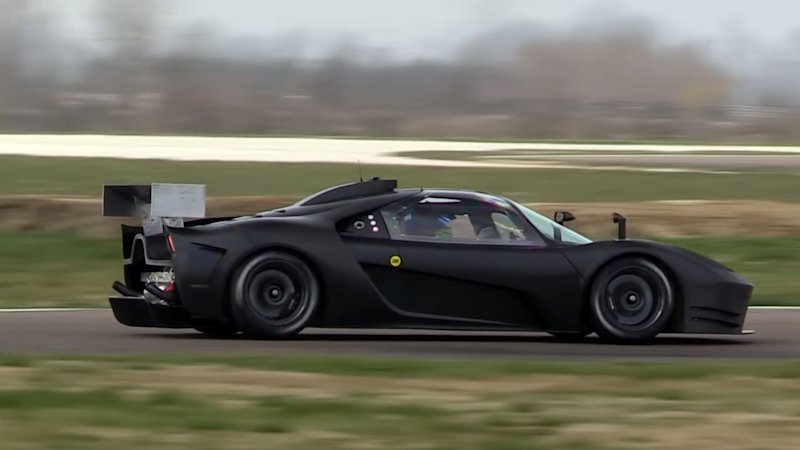At the conclusion of last year’s Lamborghini Super Trofeo series, the Sant’Agata Bolognese carmaker’s Squadra Corse division unveiled the SC18 Alstom. That was a one-off, customer-commissioned, extreme track car based on the Aventador SVJ, and the first wholesale creation from the racing department. At this year’s series finale in Jerez, Spain, it teased a limited-run hypercar and an evolution of the race-bound Urus ST-X. The hypercar proves a rumor from earlier this month, when a poster at the McLaren Life forum said he was “Going to spec next week and test drive the SVR V12 track version of AV,” that AV standing for Aventador. Lamborghini says the track-only car, designed by the company’s Centro Stile department, will debut next year.
The rumor had posited the hypercar as a ne plus ultra expression of the Aventador’s 6.5-liter V12, and that seems to be the case. Engineers extracted 830 horsepower from the naturally aspirated engine, 70 hp more than found in the SVJ. In place of the road car’s seven-speed, single-clutch ISR transmission, the unnamed hypercar uses a six-speed Xtrac sequential gearbox, and a mechanical limited-slip differential can be adjusted by the driver for preload. The standard Aventador chassis has been reworked around that powertrain for aerodynamic and safety reasons. The front structure’s made of aluminum, a more pliant — and less expensive — material to deal with in case of incidents on the track. The engine’s been wrapped in a steel cage in order to increase torsional and bending stiffness. Airflow improves thanks to dual intakes on the hood, an airscoop over the cockpit, and a stonking rear wing.


